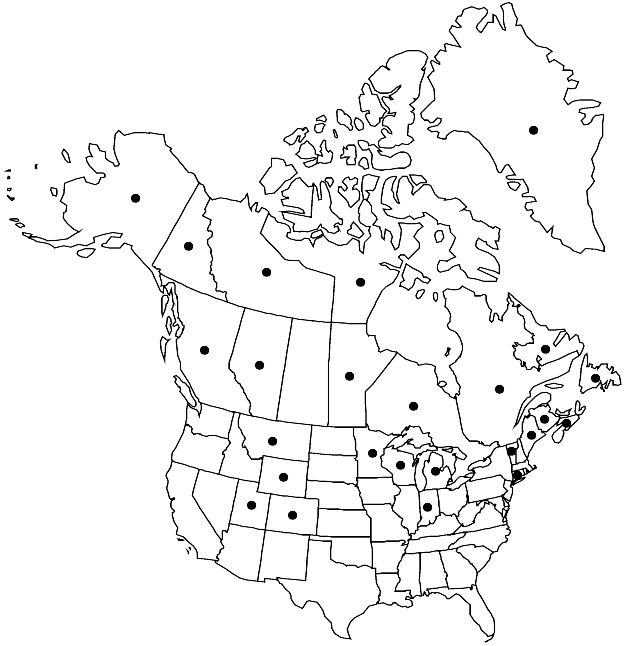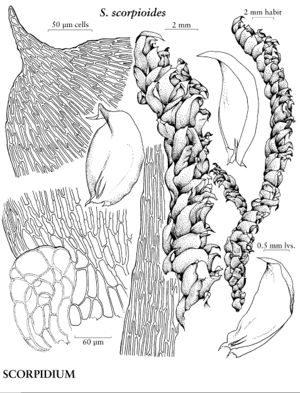Scorpidium scorpioides
Laubm. Deutschl. 3: 571. 1899.
Plants large or very large, occasionally medium-sized, turgid, green, brown, or often red to blackish red. Stems sparsely or irregularly pinnate, shoot apices often clawlike; hyalodermis partial or complete (more than 25% of stem circumference). Stem leaves almost orbicular to broadly ovate-lanceolate, abruptly or gradually narrowed to apex, suddenly curved distally or rarely straight, strongly concave, (0.7–)1–2.4 mm wide; apex obtuse, usually apiculate, acute, or acuminate; costa double or occasionally single, rarely ecostate, when single often 2-fid, reaching below to rarely slightly beyond mid leaf; alar cells 5–20; medial laminal cells (shorter 1/2 of leaf) 32–200(–210) µm, cell ends square, rounded, or short fusiform-narrowed. Sexual condition dioicous. Capsule with exostome external surface almost entirely cross striolate to almost entirely dotted proximally.
Habitat: Fens, pools, lakeshores, submerged in lakes
Elevation: low to high elevations (0-3600 m)
Distribution

Greenland, Alta., B.C., Man., N.B., Nfld. and Labr., N.W.T., N.S., Nunavut, Ont., Que., Yukon, Alaska, Colo., Conn., Ind., Maine, Mich., Minn., Mont., Utah, Vt., Wis., Wyo., South America, Eurasia, Australia.
Discussion
Scorpidium scorpioides is usually recognized by its large size and strongly concave, broad and usually shortly pointed leaves with a short single or double costa. Straight-leaved phenotypes, which are rare, look very different from the falcate-leaved ones, but, except for leaf curvature, there does not seem to be any difference between these phenotypes. Specimens with straight leaves could be confused with Pseudocalliergon turgescens, and the differences between the two are given under the latter. Although S. scorpioides superficially looks very different from the other two members of the genus, these differences are mainly found in characters, such as size and leaf shape, that affect the appearance of the plant to the naked eye. Molecular evidence and critical microscopic features of, for example, stems, alar cells, and exostomes relate this species to S. cossonii and S. revolvens. Based on molecular evidence, S. scorpioides is an ingroup within S. cossonii, and is thus an example of a species with a number of autapomorphies that are easily visible to the naked eye, in a genus where the two other members have a more generalized appearance.
Selected References
None.
